|
In-season training is one of the most misunderstood aspects of athlete development. Usually there are two sides of the coin when it comes to the mishandling of how to go about continuing progress during the season. The first group of athletes and coaches simply stop training all together or are afraid to continue any type of intense training. The other group of athletes and coaches never take their foot off the gas and end up wearing themselves down, which ultimately can stunt development and progress, hurt in-game performance or even lead to injury. Proper in-season training can go a long way in furthering development that was achieved during the off-season and preserving gains made over the course of the prior six months of training. It can also help prevent injuries and improve on-field performance! When it comes to in-season training you can vastly improve the effectiveness of your programming by understanding submaximal maintenance training and flexibility with your programming, the use of concentric only exercises and using high repetitions to promote much needed recovery!
Submaximal Training and Programming Flexibility Before you begin to understand submaximal training you must first grasp the basic fundamentals of programming flexibility. Essentially, you need to have a good feel for your body and be mindful of your in-season schedule in order to adapt your program to fit your needs. For example, you may find that weather may change your game schedule during a baseball season. You must have options of varying intensities in your programming so that you can properly adjust. If you are feeling good and have an easier week of games (for any reason), you can increase the intensity of your training so that you can still make some gains and further your development. Remember, just because you are in-season does not mean you cannot further improve on attributes you gained in the off-season. With that being said, here is a quick breakdown of a method you can use to approach your loads and intensities while you are aiming to maintain, and then how you can have some flexibility in light of opportunities to up the intensity to off-season levels. I normally keep my athletes in the 70-90/95% range of their one rep max (1RM), while they are in-season. Essentially, the only time they will work towards 90/95% of their off-season 1RM is if they are only performing one-repetition sets. I feel that the 70-85% range coupled with anywhere from 2-5 repetitions is a perfect place to maintain (and even gain) strength. Once you have this is mind it is easy to see how you can be flexible in adjusting your volume and load percentages. For example, let’s take a high school baseball player who is performing two “in-season,” training day’s per-week. This athlete’s primary lower body movement is the squat, and he maxed out at 265 pounds at the end of the off-season. Let’s create a sample situation where the general program called for three repetition sets of 80% of his 1RM, but he had an easy week due to miscellaneous cancellations and scheduling complications. An adjustment to that set program would look as follows:
You can see how easy it is to adjust your intensity to take advantage of lighter weeks you may get throughout the season! Take advantage of these opportunities and adjust! Making The Most of a Prowler Sled (Concentric only exercises) I will keep this short and sweet (I promise I will try). Muscle fibers predominantly tear during eccentric portions of a range of motion. That is, the lowering of the weight where you are controlling a load or resistance is what promotes muscle fiber tears and hypertrophy. With that in mind, concentric (part of the range of motion where you are moving into extension like the pressing in a bench press or upward movement in a squat) only movements are a great way to preserve strength, but limit eccentric stresses that can cause soreness. This is key when we are in the thick of a season and we do not want to place extra stresses on our muscles. In addition, concentric only movements help us maintain much of the strength we built in the off-season. In light of this, the prowler sled is your best friend. Almost all activities done with a sled do not incorporate an eccentric load on the body. Sled pushes work your legs, but only through extension, sled rows do the same and just about any other variation can be thought of in order to preserve strength and limit muscular soreness. Using High Repetitions to Promote Recovery Lastly, I will generally make one of my suggested two-day in-season training days repetition based. Higher repetition sets at lower intensities (think of a 15 rep set with a weight you could do for 30 reps) are great to promote blood flow and recovery for an in-season athlete who may very well need this. A great way to treat recovery based repetition lifts is to perform them in a 65-75% intensity (window for aerobic recovery). In addition you can also treat the higher repetition based lifts with the same mentality as your heavier day. IT IS OK to push it just a bit if you are feeling great and have a lighter schedule that week. Go ahead and use these tools to ensure that your in-season training is effective and even result yielding as tool to send you into the next off-season with a head start on your competition!
1 Comment
Last week, Dr. Anthony Falco discussed the basics of heart rate training and how to properly calculate your resting heart rate and maximum heart rate. Once you determine these numbers you can properly utilize heart rate monitors to enhance your training. In athletes, this can be tremendously useful, as it will allow them to better determine if their aerobic training is focused on recovery, maintenance, or aerobic improvement. For the sake of this article, we will be focusing on aerobic improvement. To improve an athlete’s aerobic capacity you must understand the percentage of maximum heart rate needed to reach the improvement threshold and also how to use exercises which best work towards achieving that same goal. Proper Heart Rate Percentage For Aerobic Improvement In the past I discussed using the aerobic capacity system to help aide in recovery for athletes. For recovery, it is best to work in a 60-75% range of the athlete’s max heart rate. However, the range for aerobic improvement goes as high as 85-90% of the max heart rate. Basically, apply Dr. Falco’s formula for your maximum heart to these percentages and you can find the best threshold for an athlete to work in to improve aerobic capacity. For example:
How To Construct A Proper Movement Pattern Aerobic Program As I previously mentioned, the movement patterns are great to use for aerobic improvement for a number of reasons. In addition to helping improve an athlete’s working capacity, you can also use this as extra time to drill home proper form with the main movements. However, it is extremely important to note that an athlete must show proficiency in these movements prior to using them, as it is never ideal to learn a new skill or movement in a fatigued state. For example, an athlete who cannot perform a proper bodyweight squat should not be allowed to use this movement in an aerobic circuit as they will be susceptible to not only injury, but can further program their nervous system to perform the movement incorrectly.
The most important thing to remember here is that you can find success with a multitude of different methods. Once you have determined your proper heart rate the main goal is simply stay in that zone and maximize your aerobic capacity. Movement pattern circuits are simply a great alternative to use because they can further solidify the proper form and technique of the most important qualities and movements for an athlete. Gerry DeFilippo In part four of our supplemental and accessory exercise series I discuss the squat, what you should be looking for with your supplemental squat work, and my two absolute favorite supplemental exercises to perfect your squat form and build your posterior chain.
Goals With The Squat I just want to address a couple things right away before we move on. I have seen some posts recently about posterior loading with squats and the notion that refraining from your “knees passing your toes” is a myth. The idea is that if you squat deep enough your knees will need to pass (or at least align with) your toes or else you will not be able to maintained a properly aligned and neutral spine. While I do feel that you can maintain a properly aligned spine if you have enough mobility, stability and motor control throughout the range of motion, I won’t even get into that. However, what I am going to say is that for athletes and average gym goers it is not necessary to go drastically below parallel in your squat. I have all of my athletes squat to a box at parallel or just below and we see great results. With that being said if we properly load our posterior chain when we squat (think about your hips leading the movement instead of your knees), we will reap great benefits for our glutes, hamstrings and hips. Furthermore, I have noticed that my athletes and clients are much more likely to create proper torque and external rotation when focusing on engaging their posterior chain. From this information we can gather that our goals with the squat are to properly load the posterior chain. So, what does that tell us? Well, let us take a step back here. As I mentioned in article one of this series the goal of a supplemental exercise is to build strength and proficiency with a fundamental movement pattern (exercise should be in the same plane of motion and also incorporate many characteristics of the fundamental movement). Keep this in mind as I delve into my two favorite supplemental squat exercises that will help build mobility, stability and dynamic motor control throughout the full range of motion, and will also help develop unilateral lower body strength and build muscle. The Goblet Squat The goblet squat is my absolute favorite exercise to perfect squat form. I have taken athletes who have never even squatted (front or back squats) prior to training with me, and perfected their form in only five to six weeks with just the goblet squat. For one, holding a dumbbell in goblet style (perched just under your chin), forces posterior loading. Holding the load anteriorly (in front of you) forces you to “sit back” as the weight would fully pull you forward if you do not load properly. Secondly, a lightened load allows you to focus on form entirely. For beginners I will have them squat with a mini band around their knees (while also barefoot) to help them feel the floor beneath them (the true creation of torque) and “drive their knees out” to ensure proper external rotation. Lastly, I like to utilize eccentrics and isometrics with the goblet squat in order to develop dynamic motor control within the entire squat range of motion. Slow eccentrics (think of a five second lowering to the box) can not only build proficiency throughout the entire range of motion (slow eccentrics are one of the best ways to build muscle and strength with a movement), but they can also build muscle mass via increased time under tension (time a muscle spends in contraction), which are great goals to have in mind for beginners or even some advanced athletes and lifters. Isometrics (think pauses throughout any point of the range of motion) are another great tool to develop motor control and stability with the movement and also can assist in increasing time under tension. Split Squats As I mentioned earlier, building unilateral leg strength is equally important as a supplement to the squat. Split squats allow us to target each leg individually, but still maintain the same movement pattern. Unilateral work has a multitude of benefits for athletes (in terms of success in building speed, agility and other areas), but for now we will just focus on using them to rid of muscle imbalances with each side and how that can help build proficiency with the squat. While split squats can be performed with dumbbells, I do like to use them with a rack position barbell load (front squat position) or back squat load (depends on what type of squat my athlete is performing on a consistent basis. This allows them to build comfort with the bar while also building unilateral leg strength throughout the range of motion. Applying the same eccentric and isometric principles that I mentioned with the goblet squat can go a long way with these as well. Special Bonus For a more advanced goblet squat variation, perform the exercise with two dumbbells each loaded in the rack position. This is a great variation for those who primarily use front squats instead of back squats. Aside from the usual benefits of the goblet squat, these will help develop more proficiency in the rack position and also help strengthen the wrists for barbell front squats. Building Your Program With Supplemental and Accessory ExerciseS (Week 1 of An 11 Week Series)4/27/2017 In terms of programming, one of the main components of building an ideal program comes from a sound and consistent template. Over the next 11 weeks I will be breaking down two tremendously important aspects of a training program, which are supplemental and accessory lifts. Basically, there are five fundamental movement patterns that are almost always involved in our training.
They are as follows:
Each of these movements can be improved upon via supplemental and accessory lifts. Essentially, supplemental lifts are of the same type of pattern as the primary movement pattern and help build that movement pattern directly. Think of it in the sense of a training family tree. The fundamental movement patterns are the ancestors of the family. Each movement pattern then branches off into supplemental exercises, and from those supplemental exercises come a multitude of accessory exercises. Accessories are more specific and target particular muscle groups to strengthen the supplemental and then back up to the fundamental movements. Breaking Down an Effective Training Program Now that I have shed some light on supplemental and accessory exercises, I would like to briefly detail a skeleton or template of these exercises and how they should be utilized for performance benefits. You will see that this is a fairly simple concept and it can be used and repeated for all of the fundamental movement patterns. In addition, having a template allows us to collect a database of exercises for each category and as a result we can keep our training fresh by utilizing different variations for similar effects. The template breaks down as follows:
What To Expect Moving Forward Over the next ten weeks I will write separate articles for my favorite supplemental exercises for each of the fundamental movement patterns. Once I am through with that, I will do the same with accessories. That is a total of 10 articles, two pertaining to each movement pattern. At the conclusion of this comprehensive breakdown you will be able to use this template I provided and utilize my favorite exercises. So, last but not least in our series regarding form and technique for the major “big three” barbell lifts is the squat. Many people hold the squat in high regard. Athletes call on squats as one of the main tools to develop lower body strength and power and bodybuilders utilize them to build massive legs. However, many people are mislead and often do not practice proper form and technique. In light of this, results are not maximized, and neither is performance. In addition, injury can occur and sometimes can be major. In order to ensure you are performing the squat in a proper manner, here are some technique considerations and cues that will help you get in the right position.
Feet Shoulder Width Apart While comfort is also important for maximum efficiency, a stance that is too wide or too narrow can make it more difficult to generate necessary torque. We will see how this comes into play with our next cue. Screw Feet To The Floor (Tear The Giant Piece of Paper) As I mentioned above, torque is a necessity will all barbell lifts. With the squat, proper torque will help place your hips, knees, and back in the right position and limit unnecessary strain placed on these parts of the body. A good cue to use to help generate torque is screwing your feet into the floor (right foot clockwise and left foot counter clockwise). Another way to think about it is to imagine that the floor beneath you was a giant piece of paper. If you wanted to tear that paper down the middle without moving any parts of your body, you would accomplish this by driving your feet and screwing them into the floor. Grip The Bar With Your Middle Finger On The Rings This will put your hands in the proper position on the bar Break The Bar To create torque in the upper body, you must externally rotate your shoulders. If you were to try breaking the barbell and rotate your right hand clockwise and your left hand counter clockwise you will achieve this. Unrack and Perform Lat Pull Down Imagine performing a lat pull down with the bar to properly engage your lats and ensure that your elbows are in and remain under the bar Let Your Hips Lead First The bar is on your back, you have taken it off the rack, and you’re ready to squat. It is imperative that you load most of the weight onto your hips, glutes and posterior chain instead of your knees. A good way to cue this and make sure your knees to not move forward and take on undue stress is to cue the hips to move first. The first part to move will take on most of the load, and continuing to sit back and drive back with your hips will make sure that your knees to not cast forward. Chest Out and Drive The Bar Straight Up These cues are critical to promote proper posture throughout the lift and make sure that your upper body does not fall forward as you return the weight from the bottom of the squat. Driving your chest out and returning in a straight line exactly from where you came will help keep your upper body in the proper position. The picture above is none other than Ray Williams setting the raw squat world record this past weekend with an astonishing squat of 1,005 pounds. Contrary to popular believe I am leaving this here to inspire you and not make you depressed. Anyway, I digress.
So far you have seen me divulge the five best accessories to build both your bench press and deadlift. Now, I will take you through the top five accessories to build your barbell squat. Since the dawn of weightlifting the squat has been a highly regarded power lift variation that demonstrated true overall power. Just because we all do not possess the ability to load 600 pounds on our backs does not mean that you cannot make significant progress with your squat and improve your form and range of motion with various accessory exercises. From exercises that do not involve a barbell, to variations you can add to your barbell work, these accessories will target improved form via muscle memory and added strength, and help develop power through the entirety of the range of motion. Goblet Squat First and foremost, the goblet squat is a great exercise to use with beginners as they develop the proper mobility, stability, and motor control to perform the squat properly. By using a dumbbell that is loaded anteriorly, goblet squats simplify the squat movement because they do not require the added shoulder stability and mobility that a back loaded squat entails. In addition, they are a great alternative to use for rotational athletes (think hockey and baseball players), or lifters with elbow and shoulder pain, who do not want to compromise these areas by engaging in a back squat. Goblet squats can aid in developing necessary strength throughout the full range of motion while allowing a way to practice creating torque and driving out the knees, maintaining a neutral spine, and getting a feel for the proper depth required for the squat. So, go pick up a dumbbell, and master proper form and motor control that will lead to a better barbell squat. Bulgarian Split Squats One way to improve unilateral strength (each individual leg), while again practicing the proper squat cues is the Bulgarian split squat. This variation is a great way to build your quads, hamstrings and glutes, while also building significant mobility and stability in your individual legs. While performing the split squat it is imperative that you still practice the same squat techniques so you do not develop poor habits and have the exercise become a detriment to your motor control. Be sure to hip hinge prior to engaging the knees, so that the exercise places the load on your hips and hamstrings and does not place too much stress on your knees. If you do this with your barbell squat you are staring down the barrel of an impending knee injury. Also, as an added bonus, split squats are a great way to improve single leg eccentric strength and starting strength (the two most important components to agility) so split squats also provide a great benefit to team sport athletes. So, use split squats as a good way to not only build unilateral strength and control, but to also practice critical facets of squat form. Hip Thrusts Yes, I know this was an accessory I included in the five best accessories to improve your deadlift. However, this does not mean that hip thrusts are not equally as important to help build your squat. Look at this as one of those “kill two birds with one stone,” situations. Adding hip thrusts to your routine will augment not only your deadlift but your squat as well. Having strong glutes is imperative to help you drive out of the hole when squatting. In addition, if you load your hips properly, most of the stress of the squat will be placed on your posterior chain (hamstrings, glutes, and hips). So, as you can see, developing your glutes will be key to ensuring you can be in an optimal position to perform a squat correctly and effectively, and also enhance your overall strength, power, and stability. Dynamic Effort Box Squats (with bands, also known as “futures” method) Now, you heard me mention power way back at the beginning of this article, and you are probably thinking to yourself, “When the hell is this guy going to actually address this?” Well I am a man of my word and that time is now. Firstly, let me explain the concept of power. Power is a product of speed and strength. Basically, I like to think of it as how quickly you can utilize your strength to create force and be explosive. The best way to develop power is through compensatory acceleration training. Made famous by Dr. Fred Hatfield, compensatory acceleration training is a method, which focuses purely on bar speed. Think about it. What better way is there to develop power than to emphasize speed on a movement that requires strength? A good way to cue dynamic effort training is to emphasize three-five seconds for the eccentric (negative) phase of the movement, and then a one second concentric (upward movement) portion of the movement. This will help develop ultimate power for team sport athletes and general lifters just looking to improve their squat. Finally, adding bands from the top down (think putting a band around the end of the barbell and then attaching it to the top of the power rack) is a great way to acclimate a lifter’s central nervous system to heavier loads than they can handle as the bands will help drive the load during the duration of the lift, but allow the athlete to adapt to the heavier load simultaneously. This is a great way to advance towards heavier loads in the squat. Slow Eccentric (Negative) Pause Squats Slow eccentric pause squats are a great way to develop necessary eccentric strength, which will be key when you begin to advance to heavier weights. Anatomically, the body is stronger in extension (think the top half of the squat) then it is in flexion (think the bottom half of the squat). This basically means that you can handle a far heavier load at the back end of the movement then you can as you lower the bar and enter into flexion. With this being said, I am always a proponent of attacking weaknesses, so I feel that slow eccentric squats with a slight pause are a great way to improve this strength in flexion and help with your ability in the bottom half of the squat. Adding pauses are a great way to increase the time under tension, and maintain the contraction, which will aid in building strength and muscle mass. I have given you the tools to build a better squat, so go push some heavy weight and reap the multitude of benefits in the process! |
AuthorSGerry DeFilippo: ISSA CPT- CPPS, AAPS. Founder/Owner: Challenger Strength. Archives
October 2020
Categories
All
|
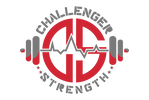

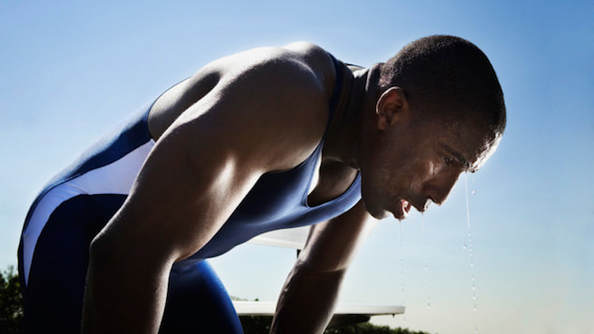
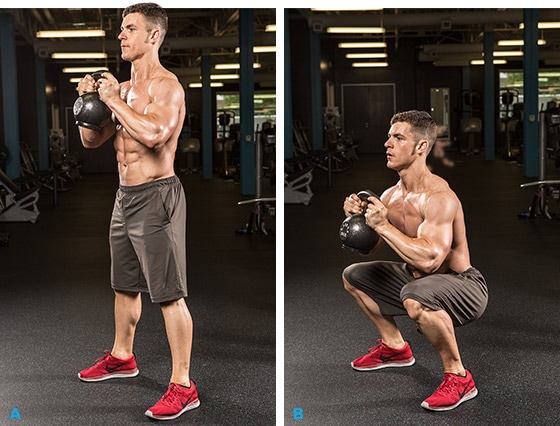
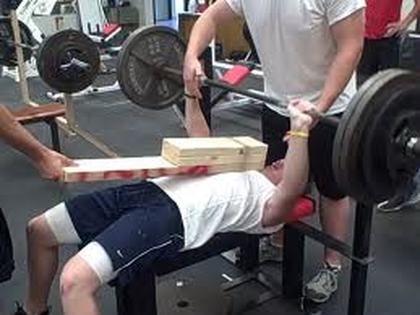
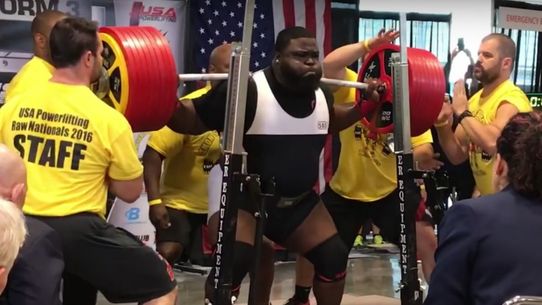
 RSS Feed
RSS Feed